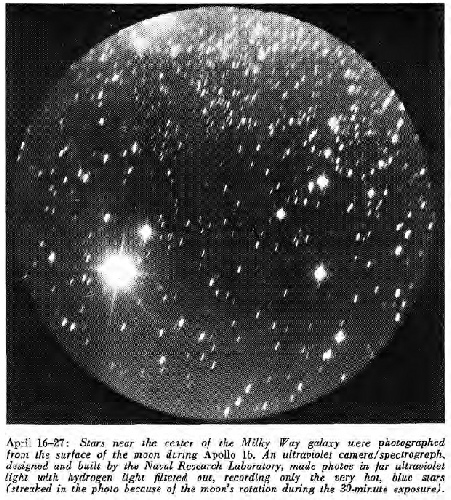At first glance there is not the identical match that we were finding so readily with the visible spectrum images, so how can we be absolutely sure we have the right area? Well, the big clue is that the image contains the Cygnus nebula, which can be seen in the bottom right of the UV image. I’ve zoomed in on the area below, and also included the photograph from the revised S201 report. It is important to bear in mind that we are looking at the UV spectrum, and the stars registering most strongly in the Apollo image are those emitting more UV light. Stars emitting less UV light will not show up as brightly as those that do.
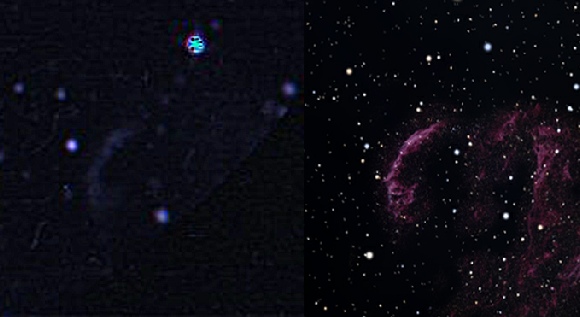
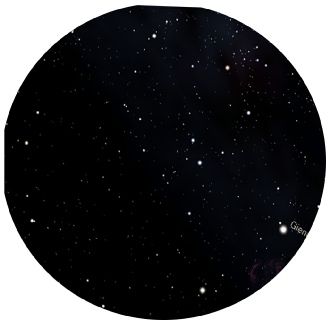
The modern image is obviously much more detailed, but the main bright objects can be found in both images.
The next images shown on the website are a series of photographs at different exposure lengths, one of which has been widely used in scientific reports with stars labelled. Feel free to check those out for yourself, for example here. You might also want to check out this excellent youtube video, which I found after writing this page and which comes to the same conclusions.
For the purposes of this page, I’ve used this one, which is shown below left. In the middle is the target area given in the pdf document above, and on the right the Stellarium estimate of the same region.
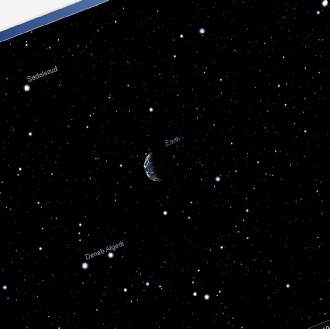
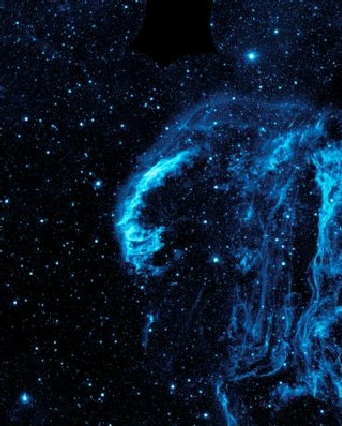
With that in mind it’s perhaps looking at the same area through a more modern UV space based telescope, GALEX. This image from the GALEX site shows the whole Cygnus loop. And we can compare that with the relevant part of the Apollo image.
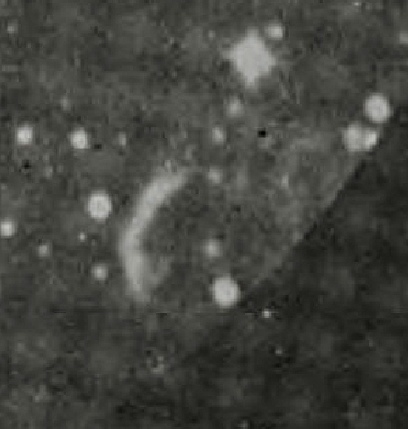
The drawing from the S201 report needs rotating by about 45 degrees anti-
As well as a number of UV stars showing in the image in the correct place relative to Earth the Earth itself is showing the correct proportions of daylight and dark for the time it was taken.
We have another interesting aspect of the of these images to be found in one of the longer exposures showing Earth. This photograph was taken over a period of 30 minutes, and the stars exhibit trails. The question here must be ‘how long would those trails be as viewed from the moon?’ I took screenshots in Stellarium at the start and end of the exposure period and superimposed the Earth as if it were fixed. The results are shown below, together with the original Apollo image.
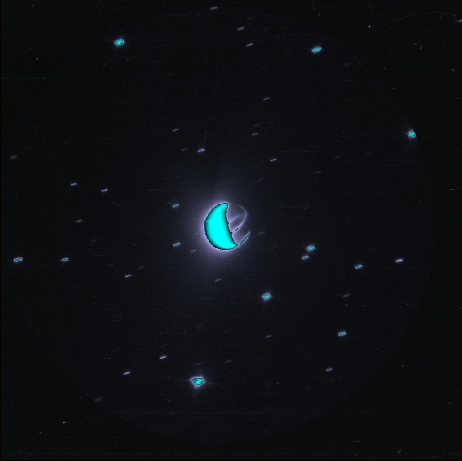
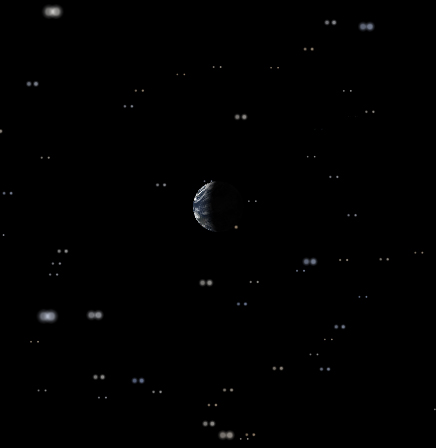
The amount of trail recorded does look to be consistent with a 30 minute exposure, but in fairness it could also be from camera vibration. Earth should also show a trail, but it is difficult to tell whether it does from these images
The best thing about these images of Earth is that it blows one conspiraloon argument right out of the water. There are some who will argue that these UV images, which can not have been taken on Earth thanks in part to the UV glow of the geocorona visible in the photographs, were taken by a satellite, specifically the TD-
Spotting the stars in the next Apollo image (aimed at Grus) is tricky because not many stars are visible in the UV image. The second photograph in the sequence does identify them much better and we can compare them with the Stellarium view (below right), and we do have the original report to help (below middle) which, together with the star plots in the S201 report that identify the direction of galactic north, help us to orient the image correctly.
The original report tells us that the Apollo image as shown above is now oriented to approximately galactic north, as is the star plot and, of course, Stellarium. As the image shown on the website we have been using is further ‘east’, we know that the one used above is nearer to the westernmost circle, and all the stars in the UV image relate to that. By doing some overlaying in Photoshop and matching the majority of stars we can try and pick out the brighter ones.
The most obvious ones are the bright stars marking a crooked line from the 11 o’clock position to 5 o’clock. The ‘11 o’clock star is the unimaginatively named HIP 117931, a binary system in the Sculptor constellation. The next star in the line of 3 doesn’t show up well, but is probably 116998. The brightest star in the upper right quadrant is likely to be Beta-
On the other side, the 3 obvious stars in the lower left quadrant (part of the Phoenix constellation) are not as easy to detect, but it is likely that the double star at roughly 9 o’clock is HIP 3391 and HIP 3434, while the blob horizontally in from those is HIP 3149 A, a double star, above which is Galaxy NGC-
The next identifiable image in this sequence shows the Large Magellanic Cloud. There are several on the website, but the most detailed is this one. For this image, we have the benefit of a photograph taken by the Swift satellite, and we can also compare that with the visible spectrum image of the same area. Below is the section of the Apollo image focused on the LMC (top left) compared with the Swift mosaic image (top right) and the same area taken in the visible spectrum (bottom).
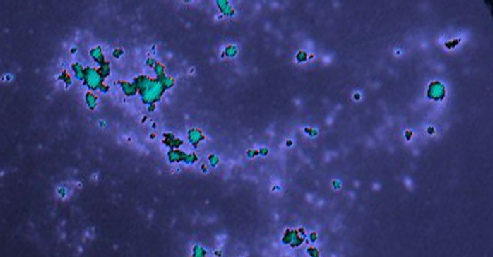
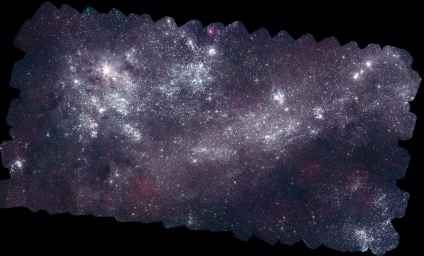
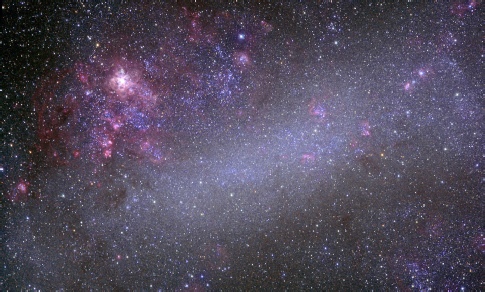
It isn’t too hard to work out that the Apollo UV image and the Swift UV image are much more alike than the visible spectrum image, and you can see more comparisons on this page that examines Apollo, Skylab and terrestrial views of this region of sky. Just for the record, here is how the full size image compares with Stellarium and the original star plot.
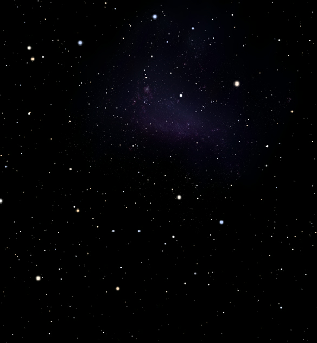
The next set of images in the UV sequence is listed as being of the southern sky constellation of Norma. The best of the UV images is this one, and it took some tracking down to get the visible spectrum location largely thanks to their being so many stars in the photograph.
The Apollo image is on the left, the report view in the middle and Stellarium’s actual view on the right.
The first image on the website is shown below (left), and is compared with Stellarium’s view (right) on the same date (21/04/72) and time (18:11:53 GMT). In the middle is the target area for the (now inverted) image given in the S201 document.
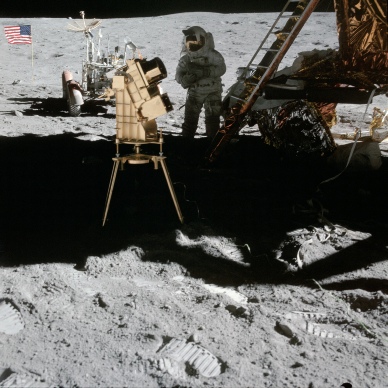
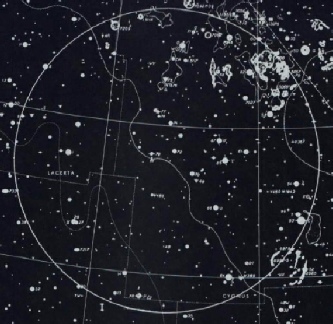
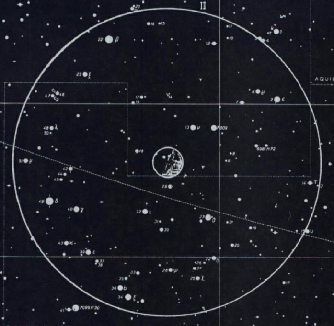
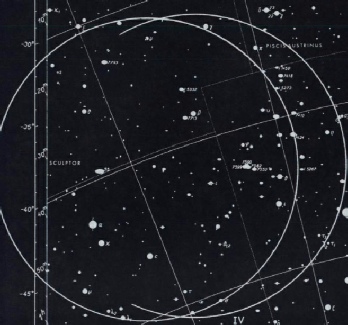
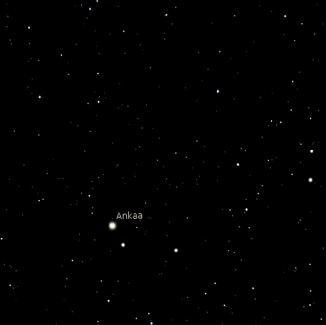
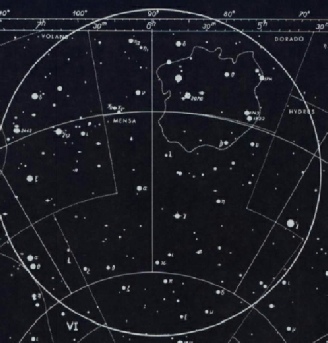
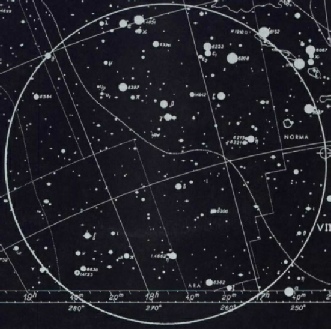
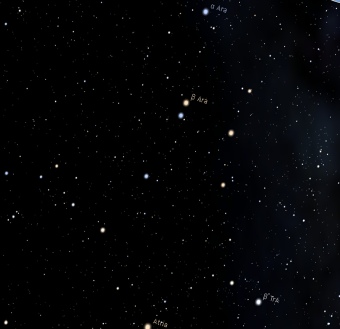
The Apollo and Stellarium views have been rotated to match each other, while the report view is unchanged.
I’ve based the match on the two brightest stars in Apollo matching the two stars (α-
For no good reason other than it’s the next page i came to in the S201 report, the next UV image to look at was aimed at Pavo, shown below on the left, with the S201 view in the middle, and Stellarium’s actual view on the right. To help in the identification process Stellarium’s star brightness has been enhanced.
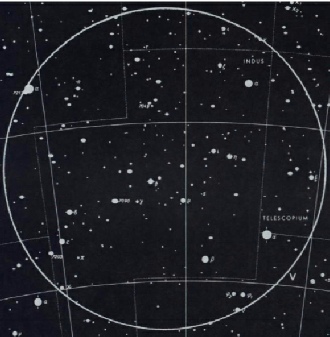
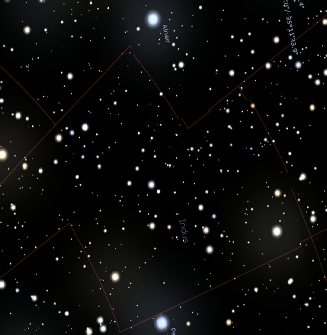
Again it’s difficult to be absolutely certain and in this case we are hindered by a lack of stars, but we clearly have two very bright stars here. By using the information in the various reports it seems likely the brightest stars would be Alnair at the top, and its opposite number is Peacock.
Assuming I’ve got it correctly oriented, the pair of less bright objects at around the 7 o’clock position are HIP 102719 and HIP 105135, both of which are blue stars. A similar sized object at around 11 o’clock would be HIP109484. In the top right quadrant of the image we ave 3 stars that trend from the 2 o’clock position towards the centre, and we can find a match for these in HIP 104158, HIP 10426 and HIP 104313. Directly below the latter is HIP 103206. In the upper left quadrant we have 2 bright objects that can be identified as HIP 108626 and HIP 107690.
Our next image was aimed at the constellation of Aquarius and hoped to catch the geocorona. The best exposure on the website is over 2 minutes and the revised S201 report has a 10 minute one. This latter exposure is shown below left, with the S201 target area in the middle and Stellarium’s version of the actual area on the right. The double circle on the middle image reflects the time elapsed during the imaging of Aquarius.
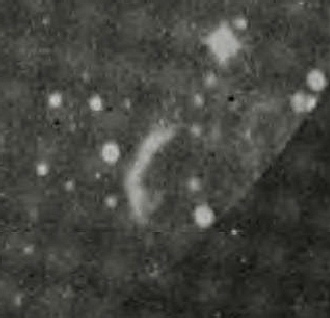
The figure below, taken from this paper, shows the areas of the sky at which the telescope was aimed.
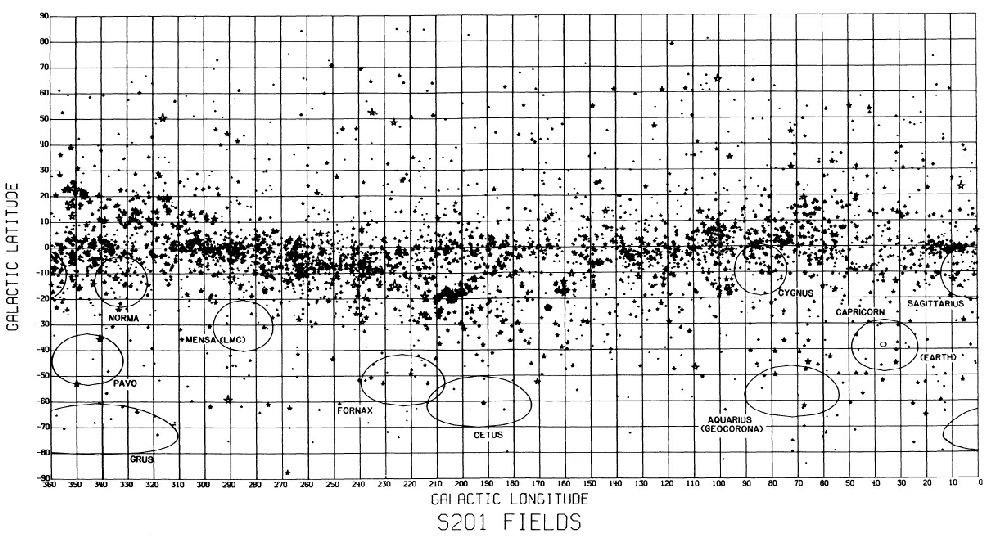
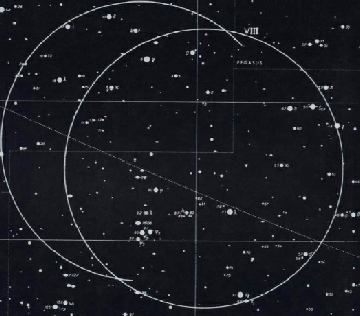
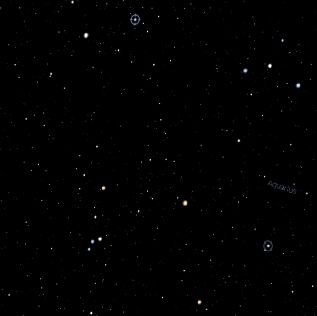
The report used to identify the SAO number of stars in Grus is also available to us here, and the two stars highlighted in Stellarium are ones identified in that article. The upper one is β Psc, SAO 127934 and the lower is σ Aqr, SAO 165134. These correspond with the bright object at around the 12 o’clock position and the star on the edge of the image at around 4 o’clock.
The bright stars around at the 7 o’clock position correspond in part to a similar collection in Stellarium. The two blue stars in Stellarium (Ψ2 and Ψ3 Aqr) are matched in the UV image by another blue star further out, HIP 115347, and still further by HIP115729. Also visible in the initial cluster of 3 is HIP 115253.
Diametrically opposed to these are two stars, the brightest of which is the blue star η Aqr, while the much less blue ζ1 Aqr registers much more dimly.
There are other matches, but I think we’ve done enough to establish that we are looking at the correct area of sky, and also that we are seeing high UV stellar objects much more clearly than we are those emitting less strongly in that part of the spectrum.
The next image was aimed at the constellation of Fornax. It is shown below left, together with the S201 predicted view and the actual view as given by Stellarium on the right.
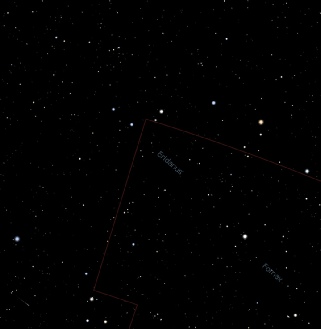
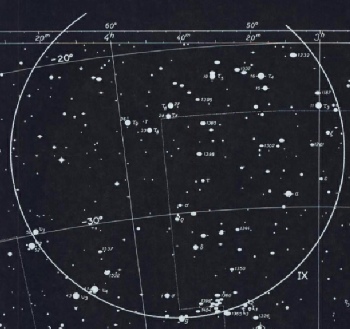
Stellarium’s view suggests a good match with the target area, and there are stars that can be made out easily. The smudge on the edge ay 8 o’clock is υ4 Eri, while opposite that at around 1 o’clock is 20 Eri. The elongated triangle at around 7 o’clock consisting of a bright star and two fainter ones contains i Eri (the bright one), HIP 19782 and HIP 17734. Looking towards the centre from i Eri, the next bright one is δ For, and directly above this is τ8 Eri. Up and to the left of this is τ9 Eri, while up and off to the right is τ5 Eri. τ7 Eri can be seen between these two when zoomed in more. Towards the top of the image just to the left of 12 o’clock is HIP 18926.
The final images on the website are from the what is described as the Milky Way centre, although the S201 report also describes it as Sagittarius. We also have identification hints in this article. The Apollo photograph, S201 target and Stellarium views are given below.
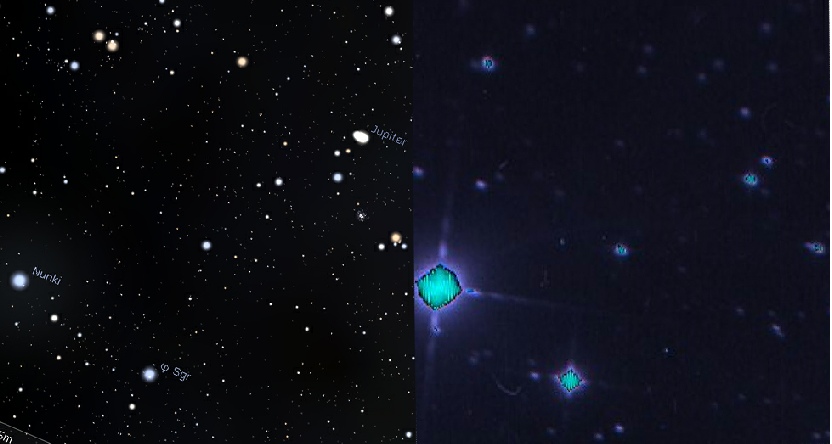
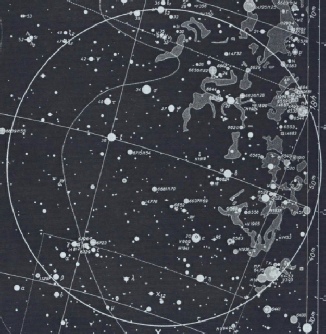
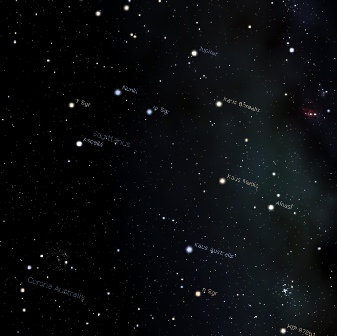
We’re helped greatly in identifying stars by the article referred to above, which identified the brightest object in the image as σ Sag, or Nunki (a star used frequently for navigation purposes during the missions because of its brightness). Also identified is the M8 nebula -
X
Jupiter should be appearing roughly where the X is, but it isn’t there. The obvious reason for this is that it is not a UV emitting star, unlike all the other objects that appear. Had the photograph been taken using conventional techniques, Jupiter would be very obvious indeed -
The final UV image is not on the website but can be found in the S201 report and is targeted at the constellation Cetus. The usual triptych of figures is presented below. The Stellarium brightnesses have been enhanced for clarity.
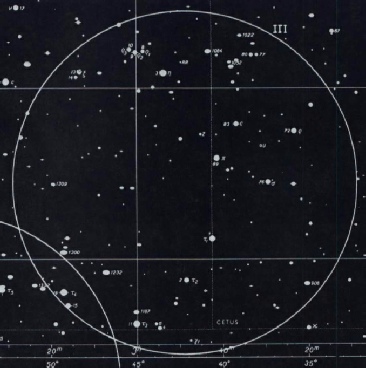
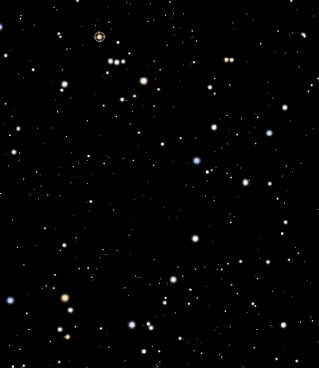
There are relatively few bright objects in this photograph, just as there are relatively few blue stars in the Stellarium view of the same scene, but we can match up the UV objects in the Apollo image with what is there in Stellarium.
The two brightest objects are those in the upper right, and these are ρ Cet towards the edge and π Cet towards the centre. Continuing the line from these two towards the left hand edge is HIP 15188, and the brighter star below that is HIP 14898.
So there we have it.
Apollo 16 took a lot of far UV images from the lunar surface, and what showed up in those images is exactly what should have shown up: UV emitting stars.
Who’d have thought it.
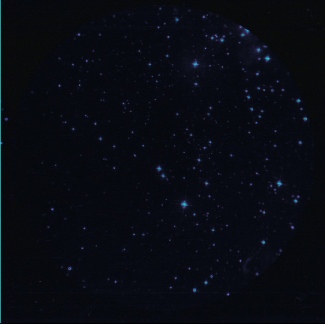
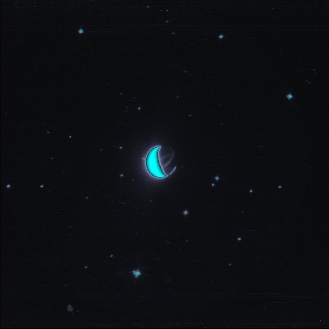
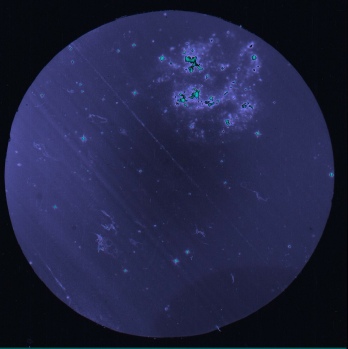
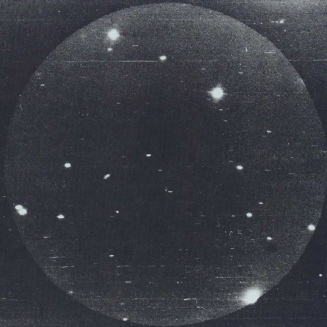
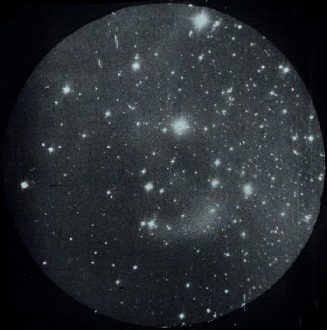
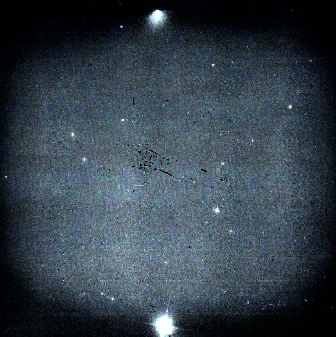
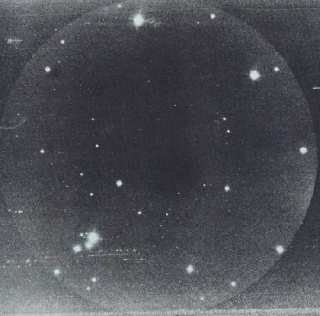
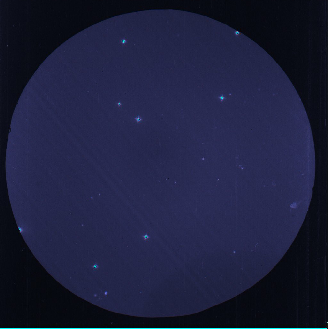
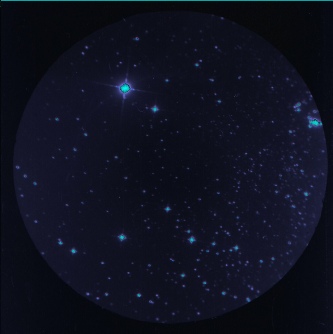
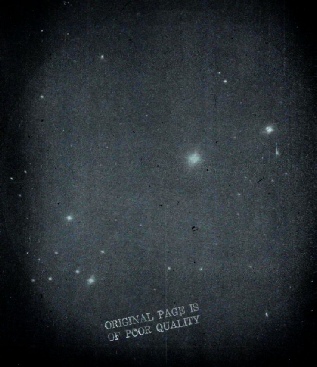
While Mattingley was doing his bit for science in lunar orbit, Young & Duke are on the lunar surface and they make their own contribution to stellar photography with a UV camera attached to a telescope. One of the photographs from this is fairly well known, and we will present it here, but others are available too. They are shown on this website and the author of that site details how he recovered the images here. We also have this document which contains detailed information about where the telescope was aimed and additional images not available on the website. A revised version of the document showing correctly oriented versions of some of the photographs is available here, and we also have this detailed document focusing on the Large Magellanic Cloud. The image below (AS16-
Apollo 16 Ultra-
While several other UV bright objects can be picked out in the image, what is more noticeable is the object that can’t be found. Look closely to the right of Nunki in the Stellarium view and you can see that Jupiter is there. A close up of the scene in Apollo and Stellarium is shown below.
